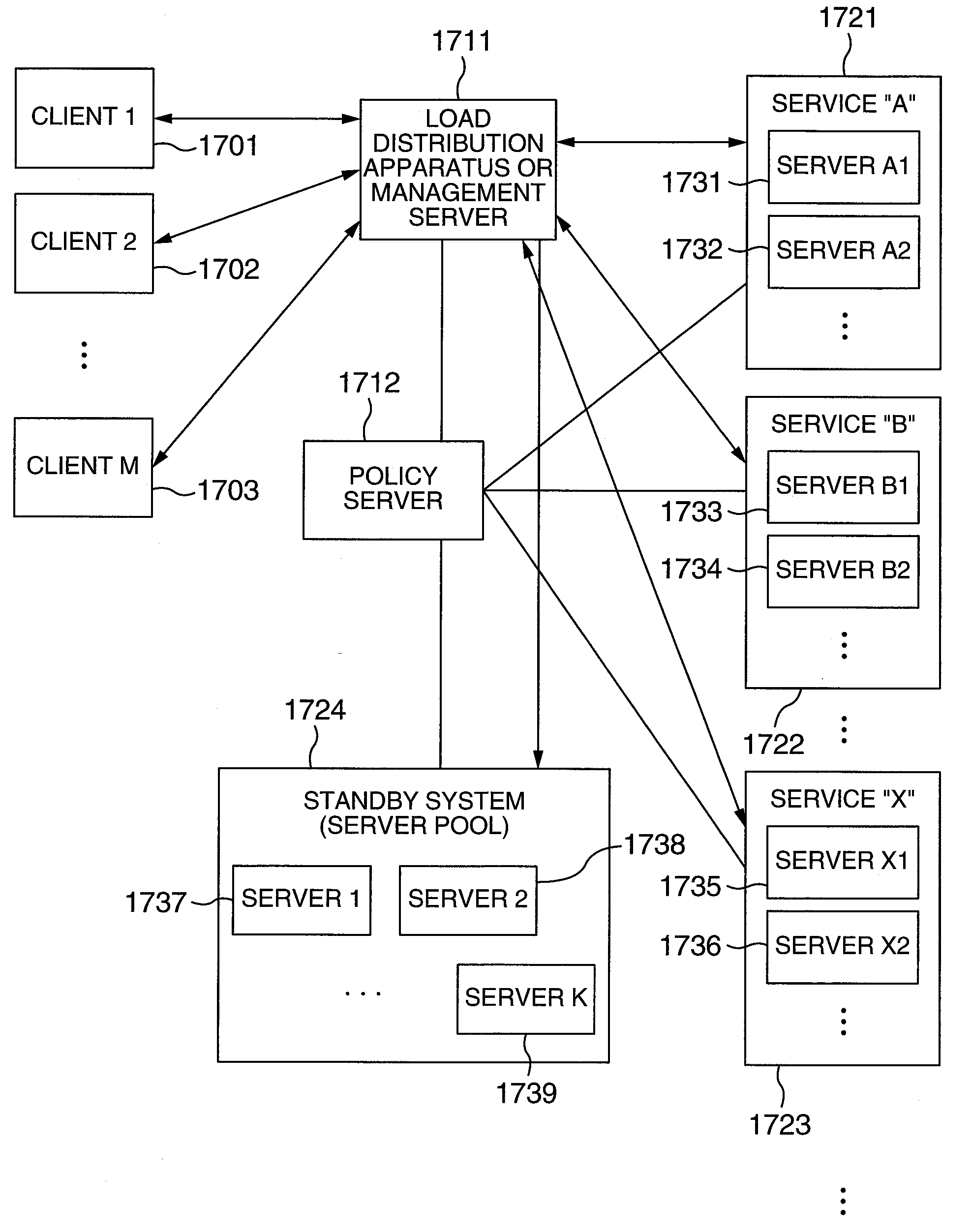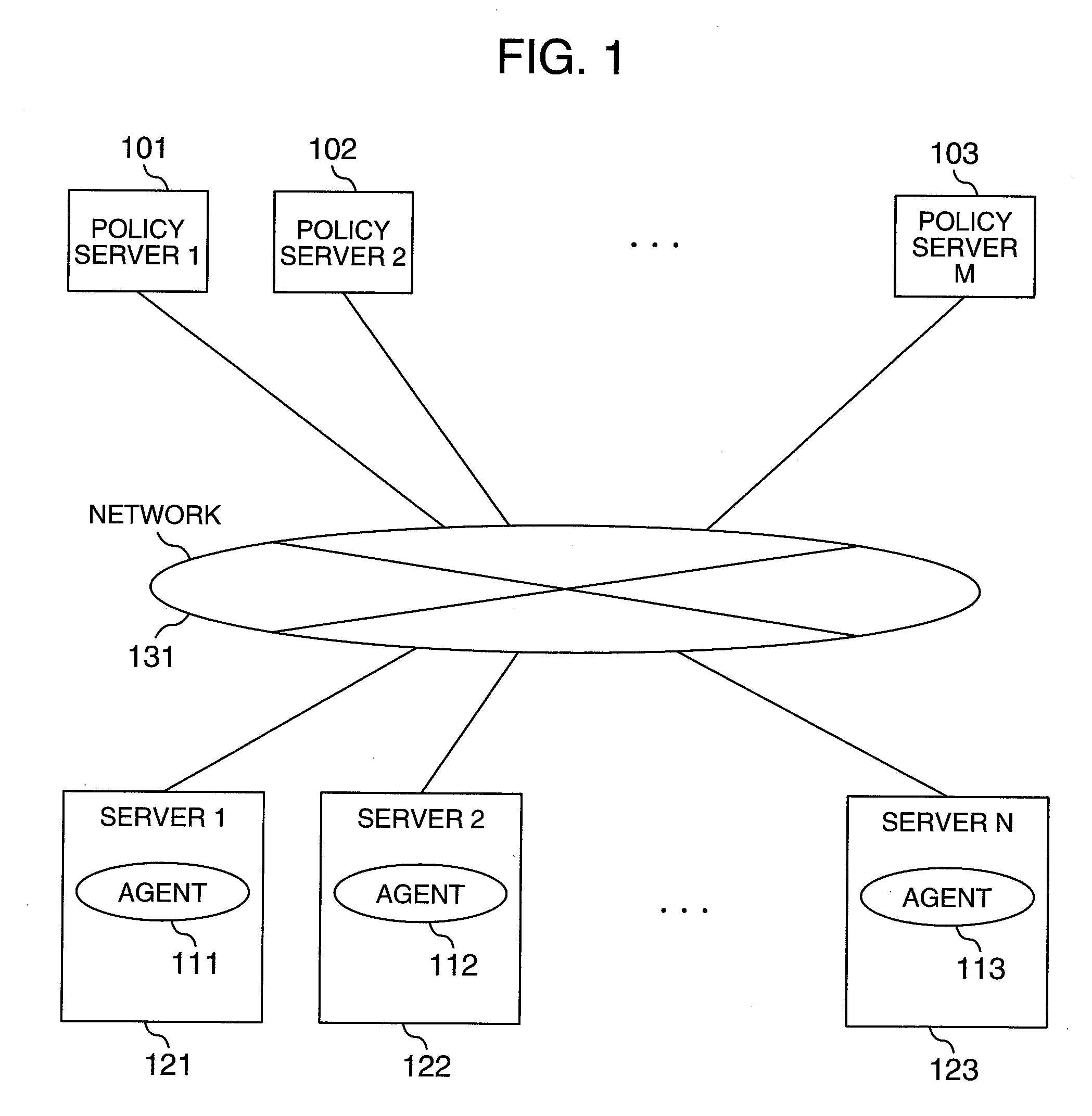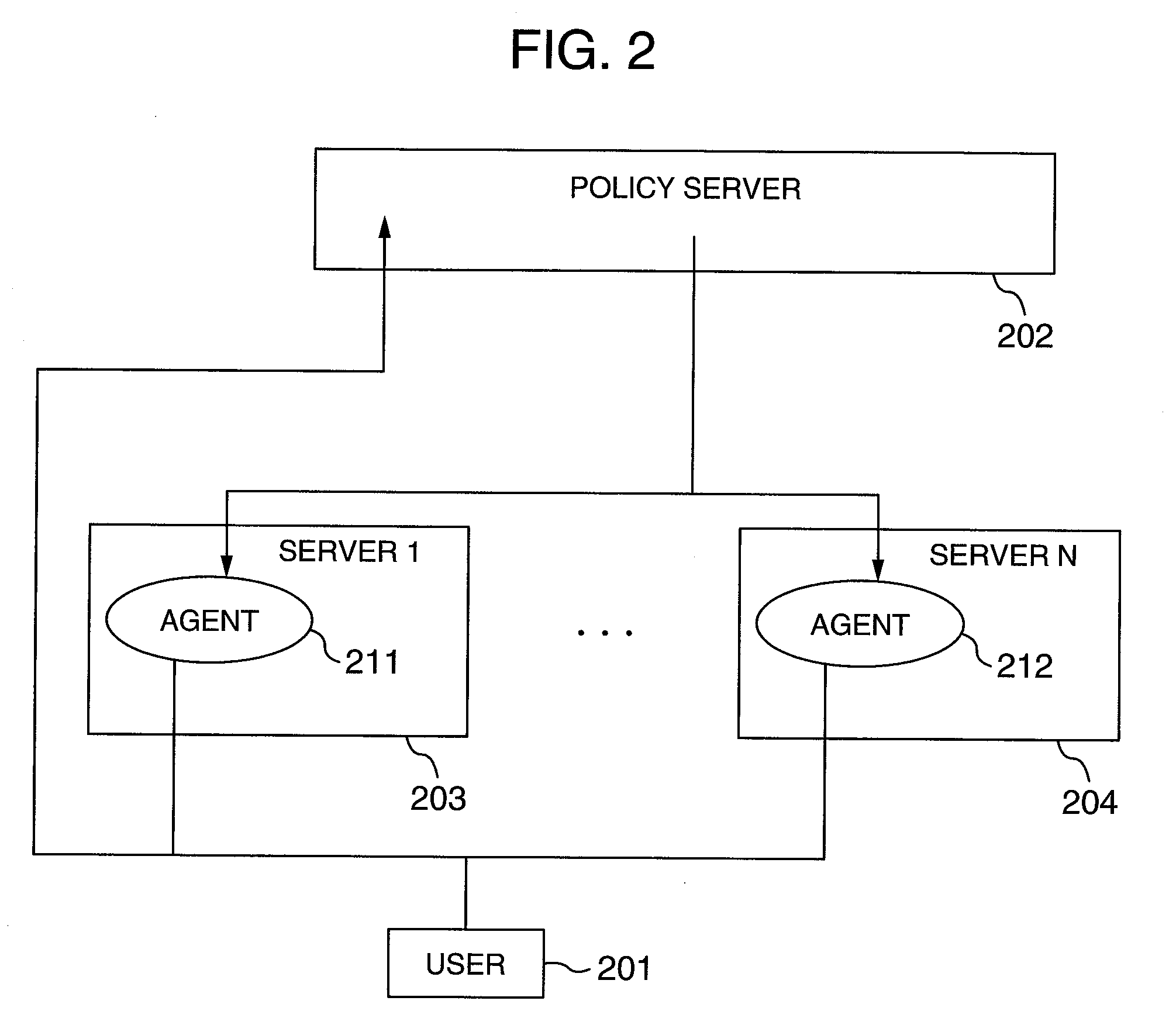Computer resource distribution method based on prediciton
a computer resource and distribution method technology, applied in the field of computer resource distribution methods based on prediciton, can solve the problems of a large number of idle computer resources present, and a large number of idle computer resources, so as to reduce the total number of computer resources, improve resource scheduling precision, and reduce the maintenance cost of surplus resources
- Summary
- Abstract
- Description
- Claims
- Application Information
AI Technical Summary
Benefits of technology
Problems solved by technology
Method used
Image
Examples
first embodiment
[0041]Hereafter, a first embodiment of the computer resource distribution method based on the prediction technique will be described in detail with reference to the drawings.
[0042]FIG. 1 shows how a plurality of policy servers 101, 102 and 103 are connected to a plurality of servers 121, 122 and 123 respectively having agents 111, 112 and 113 via a network 131 according to the computer resource distribution method based on prediction according to the present invention.
[0043]FIG. 2 is a schematic configuration diagram for the computer resource distribution method using a prediction technique according to the present invention. Reference numeral 201 denotes a user who utilizes a computer environment. A policy server 202 receives event information issued by the user 201 and agents 211 and 212 respectively in servers 203 and 204 (a schedule, load prediction, fault prediction and maintenance of the servers, and hardware information and software information issued by the agents 211 and 21...
second embodiment
[0057]Hereafter, a second embodiment of the computer resource distribution method based on the prediction technique will be described with reference to the drawings. In the second embodiment, a mechanism described in the first embodiment is used. In particular, a prediction portion concerning the load in the prediction mechanism shown in FIG. 6 will be described in detail.
[0058]FIG. 15 shows how a plurality of clients 1501, 1502 and 1503 are connected to a plurality of servers 1521, 1522 and 1523 respectively having agents 1511, 1512 and 1513 via a load distribution apparatus 1542 and a network according to the computer resource distribution method based on prediction according to the present invention. A policy server 1541 is connected to the load distribution apparatus 1542.
[0059]FIG. 6 shows how servers 1621, 1622 and 1623 are clustered by at least one clustering software program 1643 instead of the load distribution apparatus 1542. As for the mechanism for thus distributing the ...
PUM
 Login to View More
Login to View More Abstract
Description
Claims
Application Information
 Login to View More
Login to View More - R&D
- Intellectual Property
- Life Sciences
- Materials
- Tech Scout
- Unparalleled Data Quality
- Higher Quality Content
- 60% Fewer Hallucinations
Browse by: Latest US Patents, China's latest patents, Technical Efficacy Thesaurus, Application Domain, Technology Topic, Popular Technical Reports.
© 2025 PatSnap. All rights reserved.Legal|Privacy policy|Modern Slavery Act Transparency Statement|Sitemap|About US| Contact US: help@patsnap.com



